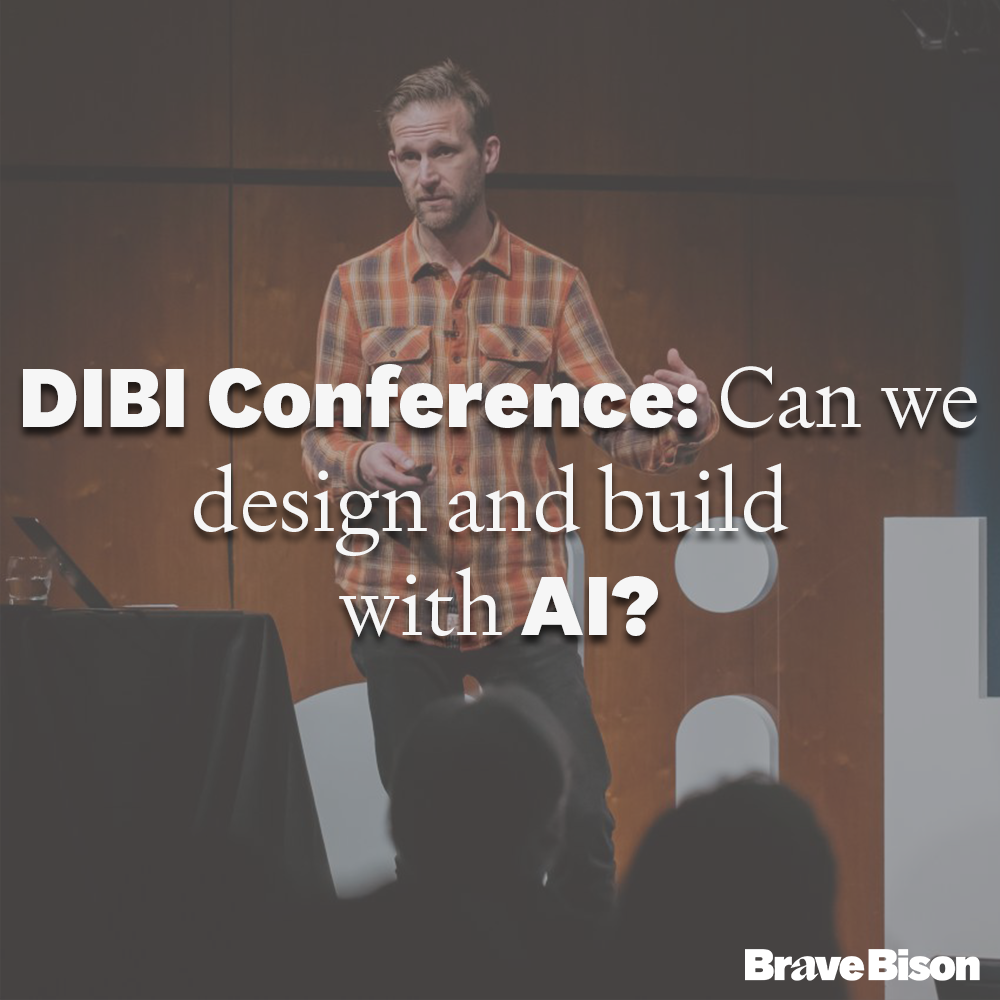
DIBI Conference: Can we design and build with AI?
May 2023
Our Creative Director Matt Garbutt was recently asked to give a talk at the DIBI conference on the use of AI in UX Design. Over to Matt...
Can we design and build with AI? This was the question we sought to answer in a recent talk I gave this month at the DIBI event in Edinburgh.
I’ve talked a lot, both internally and externally, on the new skill of prompt engineering and how I believe it’ll be a pre-requisite in many job ads of the near future.
I know I can use my daily dose of ChatGPT and Midjourney for a lot of things, including research, idea generation and development, mood boarding, concepting and so on.
But what about a UX/UI process? This is also a big part of my world.
We took a look at a test project for New Balance, a client of ours who’s been kind to let us use their name in our AI play. They’re headline sponsors of the London Marathon. So, what if we researched and mapped a site for them, aimed at runners in general and Marathon runners specifically?
As we always do, let’s start with the audience and put ChatGPT through its paces. At the time of prepping this talk, I didn’t have access to plugins or live internet, so the zero-party data that the tool used was on the 2021 cutoff date (more on more recent powerful developments at the end of the blog, stay tuned).
First prompt, note how we break it down, giving the bot a role, task context and instruction on the output format.

The result was unsurprisingly good. For brevity, I’ve had to crop this (you haven’t got a spare half hour to read a blog) but I had a task list of ten things returned. All of them were exercises that we’d do on a full UX programme.

We asked our buddy to go ahead and do the top two things for the sake of this test. But we’ll focus even harder on Persona development right now with its number one task of Market and User Research.
Next, we asked our friend to help us brainstorm as many different personas as possible. Working down from a longlist, we did some more work with the bot to develop one of those personas and a short while later, we had one fully fleshed out.

By now we’ve worked with the bot to map out our approach and process, perform research, craft a view of the people we’re designing for and build those profiles out in detail.
We didn’t stop there.
Working with our Endurance Explorer above, we then went on to brainstorm and draft a bunch of User Stories, a couple below for example.

And then, still working with our persona above, we went on to create:
A full User Journey
A User Flow
A site structure (complete with content ideas)
And we delved further into Lucy’s world to gain deeper affinity with her.
Was it perfect? No. AIs have biases, flaws and return inaccuracies (just like humans).
Was it validated or refuted with interviews, tests, workshops etc? Also no. This was a light experiment for a thirty-minute event talk.
But does it show us that we can use generative AI to accelerate a UX process? I think it does.
To round off the talk, we looked at a new tool that I’d kindly been given access to. Until recently, the UX/UI design practice was one of the last Creative bastions to hold out against AI disruption.
But recent developments are showing how that will change. We ran a live demo of a tool called Uizard. From a simple text prompt and a bit of stylistic context, this tool builds out lo-fi wireframes and UI prototypes to (again) get us off the blank page and into a creative process. It has all sorts of smart features to AI-generate images and copy in the templates, infer and apply external design systems from reference sites and screenshots, create clickable prototypes and much more.
In no way is it intended as a full design package solution but it’s showing where we’re headed. A quick walkthrough video is here from Uizard themselves: you can watch here.
We’re still so early.
Generative AI is a paradigm shift but our workflows with it are still often quite hacky.
However, we’re still the hand on the wheel and the foot on the pedal. Have fun and stay safe out there. And if you want to learn any more about AI in UX, drop us a line.
Footnote: In the days following this talk and preparation for it, ChatGPT Plus users had Plugins opened up to them. This means we now have a live internet connection combined with the power of GPT4. Another plugin is yabble, which allows us to do a thing called Silicon Sampling, essentially surveying a simulated group of people generated by GPT. Of course, these ‘people’ are based on the training data, which is the internet up to 2021.
